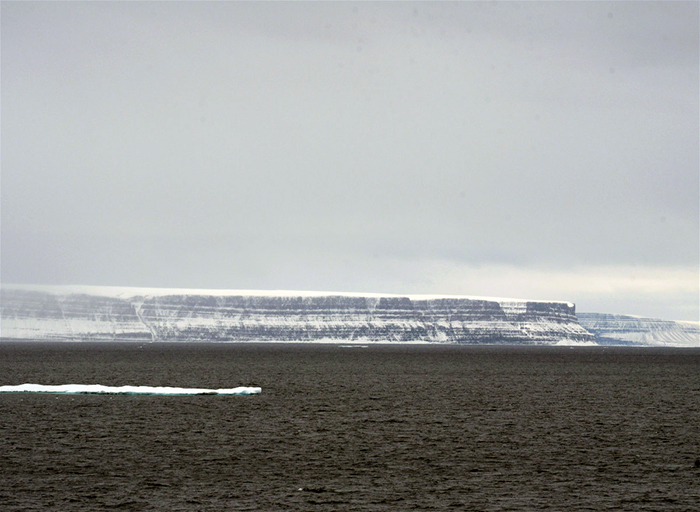Dispatch 6: Traveling throught Talluruptiu-Imanga in Lancaster Sound
Birgit Rogalla
September 10, 2020
As we woke up this morning, we were entering Lancaster Sound. Lancaster Sound sits at the eastern end of Parry Channel, just before it opens up in to Baffin Bay. This area remains open from sea ice for much of the year and is part of the northern hemisphere's largest polynya. As a result of the long availability of light and nutrients brought up to the surface by upwelling, this area is incredibly productive: it has 75% of the global population of narwhals, 20% of Canada's beluga whale population, many colonial seabirds feed and breed here, and it has the Canadian Arctic's largest density of polar bears. It is also home to walruses, bowhead whales, and various species of seals. The ecological abundance also sustains traditional harvest of whales, seals, and other marine mammals for the communities of Pond Inlet, Grise Fjord, Clyde River, Resolute Bay, and Arctic Bay surrounding Lancaster Sound.
Given the ecological and cultural importance of this area, in August 2017, the Qikiqtani Inuit Association, the Nunuvut Government and the Government of Canada signed an agreement to establish the Tallurutiup Imanga - Lancaster Sound National Marine Conservation Area. “Tallurutiup,” is the Inuktitut term for Devon Island and “Imanga” is the term for a body of water. This conservation area encompasses 109,000 square kilometers (about the area of Iceland); approximately 1.9% of Canada’s marine area. The last step in the establishment process is for the government to table legislation to formally protect the area under the Canada National Marine Conservation Areas Act. With that status, oil and gas development, mining and waste disposal are banned, while subsistence hunting, fishing and gathering are allowed.
Knowing the abundance of this beautiful area, we eagerly spent our time watching for wildlife. The fog and snow did not help and most creatures remained elusive. However, during a brief opening in the clouds, we saw the cliffs of Prince Leopold Island and birds appeared out of the clouds. Shortly after, a few of the science crew were lucky enough to spot a beluga, several narwhals, and seals.
